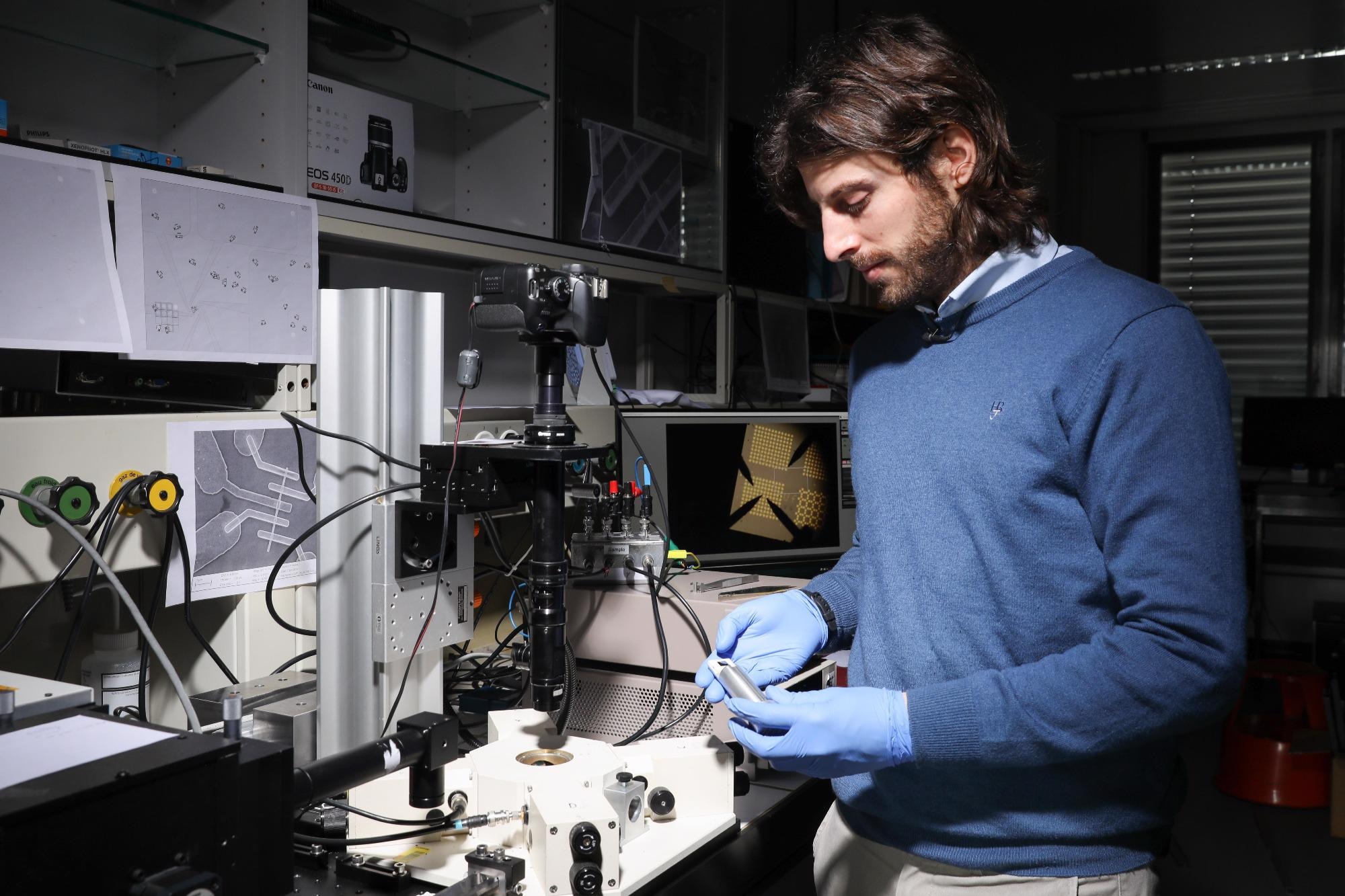Piazza, a researcher at EPFL’s Laboratory of Semiconductor Materials, explores semiconductors on a nanoscale. His main interest is nanowires or nanostructures composed of semiconducting materials, and his objective is to take transistors beyond their saturation point.
 Valerio Piazza characterizes nanowires to optimize their electrical properties. Image Credit: © 2021 EPFL Alain Herzog.
Valerio Piazza characterizes nanowires to optimize their electrical properties. Image Credit: © 2021 EPFL Alain Herzog.
The reason is that transistors are all over the place — in traffic lights, cars and even coffee makers — but their capacity to be miniaturized is reaching saturation point because existing designs are nearly exhausted.
The main challenges we now face in processing power relate to overcoming the transistor saturation point, which we can do with nanowires and other kinds of nanostructures.
Valerio Piazza, Researcher, EPFL
Valerio Piazza is the recipient of the prestigious 2020 Piaget Scientific Award.
Much of the latest improvements in processing power are based on vast progress in microfabrication approaches. These approaches are what have enabled engineers to create compact, yet advanced electronic devices like smartwatches and smartphones.
By minimizing the size of transistors, engineers can add more to a circuit, resulting in better processing power for a particular surface area. However, that also means there is a limit to just how small the processers can be made, based on the size of their transistors.
At least that is the reality for the existing generation of processing technology. Piazza’s research aims to surpass that difficulty by creating new kinds of transistors based on nanowires for application in next-generation quantum computers.
Present-day computers are composed of electronic parts and integrated circuits such as processing chips. Each bit matches an electrical charge that signifies whether current is transmitted via a wire or not (i.e., “on” or “off”). Conversely, quantum computers are not restricted to merely two states but can house an endless number of states.
The central element of quantum computing is the qubit, which can be defined as the smallest unit of memory. It is exactly at this sub-micron level that Piazza is performing his research.
Piazza’s horizontal nanowires — they can be vertical, as well — are composed of atoms from groups III and V of the periodic table: phosphorus, aluminum, gallium, nitrogen, indium and arsenic.
Each step of our development work comes with its own set of challenges. First, we have to nanostructure the substrate and create the material—here the challenge is to improve the quality of our crystals. Then we’ll need to characterize our nanowires, with the goal of improving their electrical properties.
Valerio Piazza, Researcher, EPFL
Processor transistors now measure about 10 nm. Piazza’s (horizontal) nanowires are the same size but should provide better electrical performance, based on crystal quality. His technique includes etching nanoconductors on substrate surfaces so as to develop various patterns, which will allow him to test different structures for improving performance.
Take a city’s highways as an example. If there’s just one road, you can get only from Point A to Point B. But if there are lots of exits and side streets, you can travel to different neighborhoods and go even farther.
Valerio Piazza, Researcher, EPFL
Specifically, he is building a network. In the following months, Piazza will concentrate on detecting factors that could enhance the process.